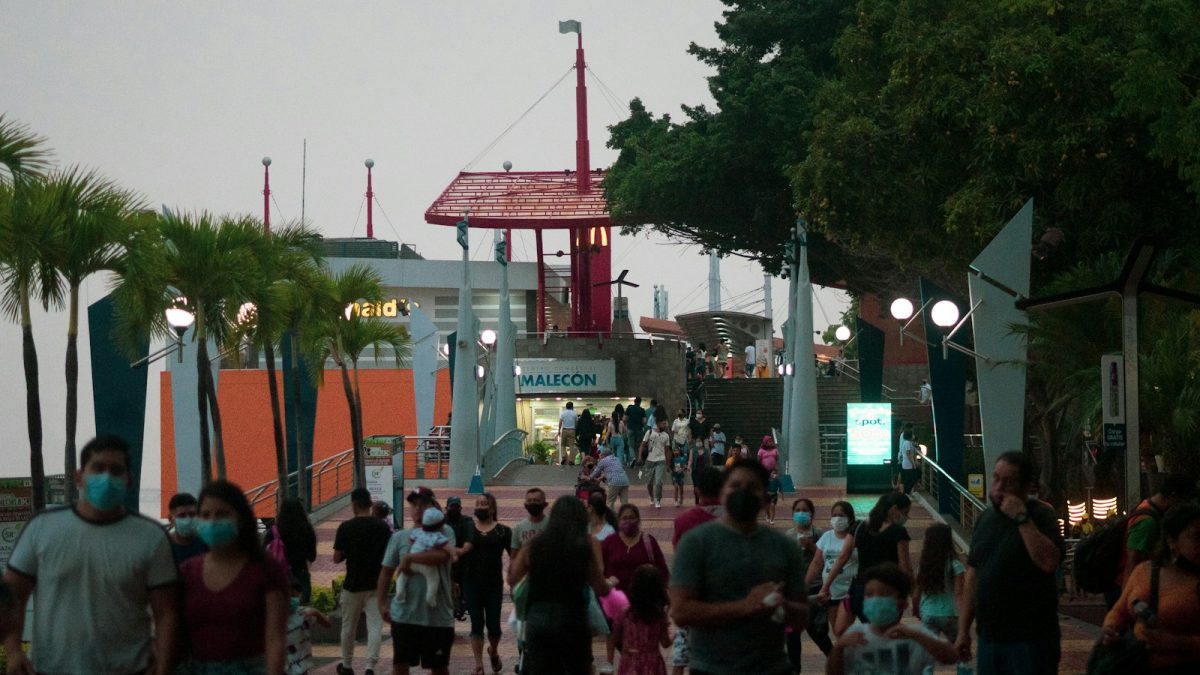
Baños Waterfalls: 5 Unforgettable Adventures Await You!
April 30, 2025
Quilotoa Hike: Discover 5 Stunning Views You Can’t Miss!
May 7, 2025Ecuador travel safety is an important subject that often weighs on the minds of prospective travelers. With its breathtaking landscapes, rich culture, and diverse wildlife, Ecuador has much to offer. However, like many destinations, it comes with its own set of safety considerations. Understanding the current safety situation can help you navigate your trip with confidence and ease.
Table of Contents
Understanding Ecuador Travel Safety
Current Safety Overview
Ecuador is currently experiencing a mixed bag in terms of safety. On one hand, the vast majority of tourists enjoy their visit without incident; on the other hand, rising gang violence has made headlines recently. According to reports from various sources, while gang-related issues have spiked since 2022 due to drug trafficking activities spilling over from neighboring countries, tourists are generally not targeted by these gangs.
Authorities have heightened security measures in urban areas such as Quito and Guayaquil to protect visitors. As a result, many popular tourist destinations remain safe for exploration. It’s important to stay updated on local news and heed any advisories issued by government agencies like Travel.gc.ca regarding travel restrictions or curfews in specific regions.
Crime Rates and Tourist Areas
Crime rates in Ecuador vary significantly between urban settings and rural areas. Major cities do experience higher levels of petty crime such as pickpocketing and bag snatching—especially in crowded places like markets or public transportation hubs. The streets may feel exhilarating yet somewhat chaotic but maintaining awareness can mitigate risks.
Tourist hotspots such as the Galapagos Islands continue to be among the safest areas in South America. The highlands—including Cuenca—are also generally regarded as secure for tourists. However, coastal provinces like Esmeraldas are currently advised against for travel due to increased criminal activity related primarily to gang disputes.
| Area | Safety Level | Notes |
|---|---|---|
| Galapagos Islands | Very High | One of the safest regions for tourists |
| Quito | Moderate | Be cautious in crowded areas |
| Guayaquil | Moderate | Increased police presence near tourist spots |
| Esmeraldas Province | Low | Avoid traveling here due to gang violence |
Staying Safe in Urban Areas
Navigating Cities like Quito and Guayaquil
Exploring cities like Quito and Guayaquil offers travelers an enriching experience filled with culture and history—but vigilance is key! Here are some tips:
- Be Aware of Your Surroundings: Always keep an eye out for suspicious behavior around you.
- Use Reputable Transportation: Opt for known taxi services with visible identification (look for orange plates) or rideshare apps instead of hailing cabs on the street.
- Stay Updated: Follow local news or consult your accommodation’s front desk about any recent incidents that might impact your plans.
While it’s easy to get caught up in excitement during your travels, maintaining a low profile can also help avoid unwanted attention from opportunistic thieves.
Public Transportation Tips
Public transport can be an adventure but comes with its own risks:
- Keep Your Belongings Secure: When using city buses or inter-provincial services, always keep bags close—preferably zipped up and held firmly.
- Avoid Rush Hour: If possible, plan trips outside peak commuting times when buses tend to be less overcrowded.
Here’s a handy checklist for bus travel:
| Tip | Action |
|---|---|
| Bag Security | Keep bags at your feet or across your chest |
| Body Language | Stand firm against crowding |
| Timing | Travel early or later than rush hours |
Remember that while public transport can present challenges, it remains one of the most authentic ways to experience daily life in Ecuador!
Overall, following basic safety protocols will enhance your experience while minimizing risk during your travels through this enchanting country!
Safety Tips for Rural Adventures
Exploring the Amazon Rainforest Safely
The Amazon Rainforest is a breathtaking destination that attracts adventurers from around the globe. However, navigating this lush paradise requires some essential safety tips. First off, consider traveling with a reputable guide who knows the area well and can navigate potential hazards, such as wildlife and challenging terrain. It’s also vital to stay within designated paths to avoid getting lost or encountering dangerous animals.
When venturing into the jungle, always pack essentials like insect repellent (mosquitoes are notorious here!), sunscreen, and a first-aid kit. Drinking plenty of water is crucial; however, ensure your water source is safe—opt for bottled or treated water. As you embark on your adventure, remember to respect local customs and wildlife; after all, this is their home!
Hiking in the Andes: What to Know
Hiking in the majestic Andes offers stunning views and an exhilarating experience but comes with its own set of safety precautions. First on the list is acclimatization; many hiking trails reach high altitudes where low oxygen levels can cause altitude sickness. Gradually ascend over a few days if possible.
Dress in layers to adjust to changing weather conditions easily—from sunny warmth to chilly winds in just moments! Don’t forget sturdy hiking boots and trekking poles for stability. Additionally, familiarize yourself with trail maps and local regulations before setting out.
Lastly, it’s wise to hike with a buddy or group rather than alone. This way, you have support in case of emergencies like injuries or sudden weather changes. Remember: safety first makes for an unforgettable adventure!
Health Precautions for Travelers
Vaccinations and Health Insurance
Before embarking on your Ecuadorian escapade, it’s important to be up-to-date on vaccinations recommended by health authorities—especially those pertaining to yellow fever if you’re planning on visiting the Amazon region. Consult your healthcare provider about which vaccines are advisable based on your itinerary.
Equally essential is securing comprehensive travel health insurance that covers medical emergencies abroad. This includes coverage for hospital stays as well as evacuation services should it become necessary—a crucial aspect when exploring remote areas where medical facilities may be limited.
Additionally, carry copies of your vaccination records along with any prescription medications you might need during your trip—just in case you encounter pharmacies with limited stock!
Food and Water Safety
Food safety can make or break your trip! To avoid foodborne illnesses while enjoying Ecuador’s unique cuisine, stick to well-cooked meals from reputable restaurants. Street food can be tempting but opt for vendors that cook fresh items right before serving them.
When it comes to hydration: drink bottled water only! Tap water isn’t safe unless boiled or treated properly; even ice cubes made from tap water are best avoided unless you’re sure they’re safe.
Furthermore, wash fruits thoroughly before consumption—even better if you can peel them! Being cautious about what goes into your body ensures you’ll enjoy every moment of your Ecuadorian adventure without unwanted interruptions caused by illness.
Cultural Awareness and Respect
Understanding Local Customs
Ecuador boasts a rich tapestry of cultures that vary across regions—from indigenous traditions in the Andes to coastal lifestyles influenced by Afro-Ecuadorians. Understanding these customs fosters mutual respect between tourists and locals alike.
Consider learning key phrases in Spanish; locals appreciate when visitors make an effort! Also, dress modestly when visiting rural communities or religious sites—this shows respect for local traditions and helps you blend in better.
Participating in cultural activities—like traditional dances or festivals—can enhance your experience profoundly while allowing deeper connections with local communities. Always ask permission before photographing individuals or sacred sites; respecting boundaries goes a long way!
Communicating with Locals
Communication may sometimes present challenges due to language barriers but don’t let that discourage you! Engaging locals through smiles and gestures often transcends spoken language barriers beautifully.
When interacting with residents, show genuine interest in their lives and stories—it opens doors not just for friendships but also deeper insights into Ecuador’s culture! Be patient when trying out new phrases; mistakes are part of learning something new!
Moreover, consider using translation apps available on smartphones—they’re handy tools when navigating conversations—or simply rely on friendly locals who will likely be more than happy to assist you!
In summary: embrace every opportunity to learn about Ecuador’s diverse cultures while respecting their norms fosters positive interactions throughout your travels! By following these guidelines related specifically under “Ecuador travel safety,” you’re setting yourself up for an enriching journey filled with unforgettable memories!
Frequently asked questions on Ecuador travel safety
Is Ecuador safe for tourists in 2025?
Ecuador is generally safe for tourists, with many enjoying their visits without issues. However, rising gang violence has been reported, particularly in urban areas. It’s essential to stay informed about local news and follow safety advisories.
What are the safest areas to visit in Ecuador?
The Galapagos Islands are considered one of the safest regions for tourists. Other secure locations include Cuenca and various parts of the highlands. In contrast, areas like Esmeraldas Province should be avoided due to increased criminal activity.
How can I stay safe while traveling in Quito and Guayaquil?
To enhance your Ecuador travel safety, be aware of your surroundings, use reputable transportation services, and stay updated on local incidents that may affect your plans. Keeping a low profile helps avoid unwanted attention from thieves.
What health precautions should travelers take before visiting Ecuador?
Travelers should ensure they are up-to-date on recommended vaccinations, especially for yellow fever if visiting the Amazon region. Additionally, securing comprehensive travel health insurance is crucial for emergencies during your trip.
Is it safe to eat street food in Ecuador?
While street food can be tempting, it’s best to choose vendors who prepare fresh items right before serving them to minimize foodborne illness risks. Stick to well-cooked meals from reputable restaurants whenever possible.
What should I know about public transportation safety in Ecuador?
Public transport can be risky; keep your belongings secure and try to avoid rush hour when buses are overcrowded. Always hold bags tightly and keep them zipped up while traveling.
Are there any specific cultural customs I should respect while visiting Ecuador?
Dressing modestly when visiting rural communities or religious sites shows respect for local traditions. Learning key Spanish phrases can also help foster mutual respect between tourists and locals.
How can I communicate effectively with locals despite language barriers?
Engaging locals through smiles and gestures often transcends language barriers. Using translation apps on smartphones can also aid communication when needed!
